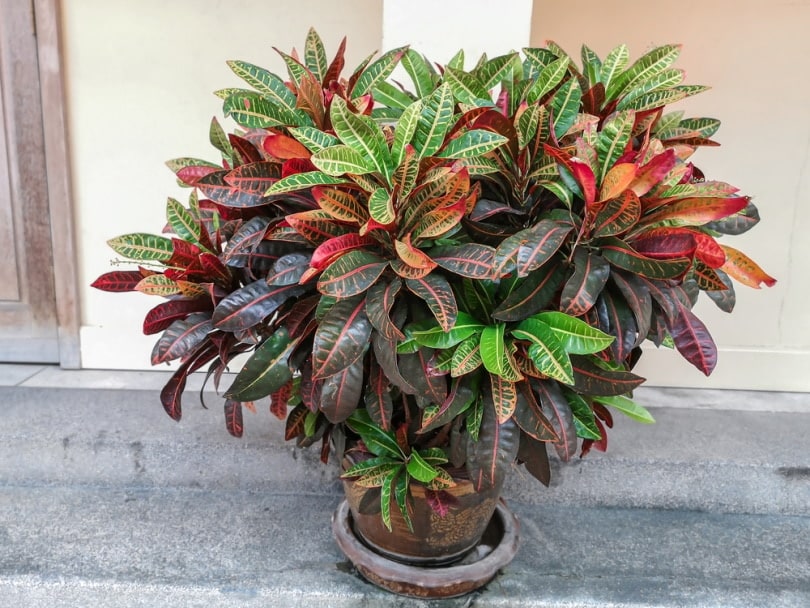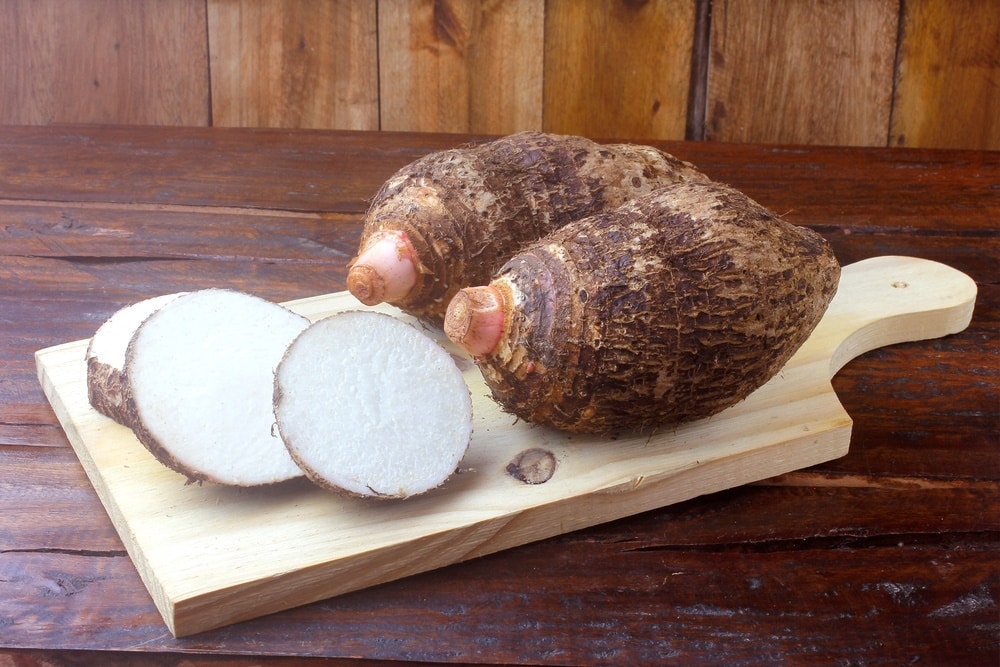The croton (Codiaeum variegatum) is a popular houseplant. This leafy, ornamental plant is native to tropical areas but adapts well indoors. But if you have a cat, this isn’t a plant you want in your home. All croton varieties—including evening embers, gold dust, and Zanzibar—are toxic to cats.
Learn more about what to do if your cat eats a Croton plant and pet-safe alternatives you can have in your home.
Are Croton Leaves Poisonous to Cats?
You should assume that all parts of a Croton plant are toxic to cats, as they contain phorbol esters and stimulate protein kinase C. But it may be helpful to your veterinarian if you can tell them whether your cat ate a leaf, root, or another part of the plant. If your cat consumes any part of a Croton plant, follow the steps below.

What to Do if Your Cat Eats a Croton Plant
Take a deep breath and stay calm if your cat eats a croton or any other poisonous plant. You need to remain level-headed and take quick action. Quickly and gently examine your cat. Brush any plant pieces off of their body, and then look inside their mouth. Gently remove any plant pieces from their mouth. Be careful with this step, as you don’t want to get bitten or scare your cat.
Place your cat in a secure area. You’ll need to keep an eye on them and possibly transport them to the nearest veterinarian, and you don’t want them to run off. Call your veterinarian or the closest 24/7 animal hospital. Have a pen and paper handy, as you may need to write down instructions or phone numbers to call.
Follow the directions the veterinarian gave you. You may need to continue to monitor your pet at home or bring them in right away.
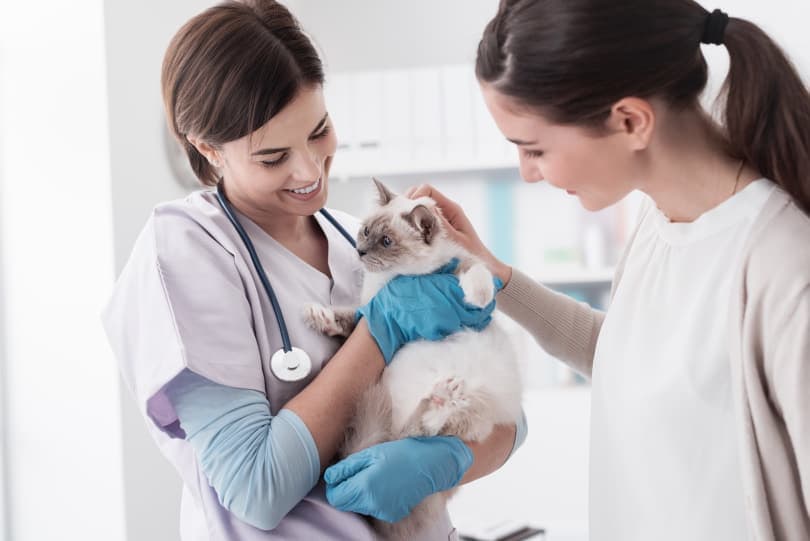
How Do I Know if My Cat Ate a Poisonous Plant?
Cats that get into poisonous plants may display these signs:
- Diarrhea
- Vomiting
- Drooling
- Skin irritation
- Lethargy
- Change in heart rate or breathing
If you don’t know the name of the plant in question, take a photo or bring a piece of it with you to the veterinarian.
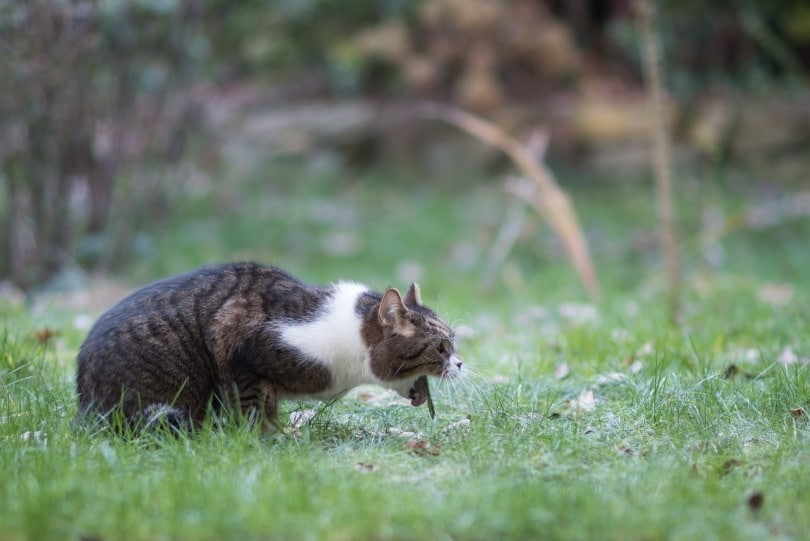
What Houseplants Are Safe for Cats?
Felines and certain houseplants can co-exist. You can add some greenery to your home with a spider plant (Chlorophytum comosum) or a duffy fern (Nephrolepis cordifolia ‘duffii’). Both of these plants are non-toxic to cats.
Be aware that even non-toxic plants can still upset a cat’s stomach. Cats are obligate carnivores. Their bodies can efficiently digest animal tissue but not whole plant matter. Your cat may vomit or have diarrhea after eating a cat-safe, non-toxic plant.
How to Keep Plants Safe From Cats (and Vice Versa)
You shouldn’t have any toxic plants in your home if you have pets. The ASPCA maintains a list of several plants that are toxic to cats. You can hang plants from the ceiling or high wall to keep them out of your cat’s reach. Some cats can jump a long distance, so this may not be an option for all breeds. You can also place smaller plants inside of a terrarium. The terrarium container should be sturdy and heavy enough to withstand your curious kitty’s pokes and swats.
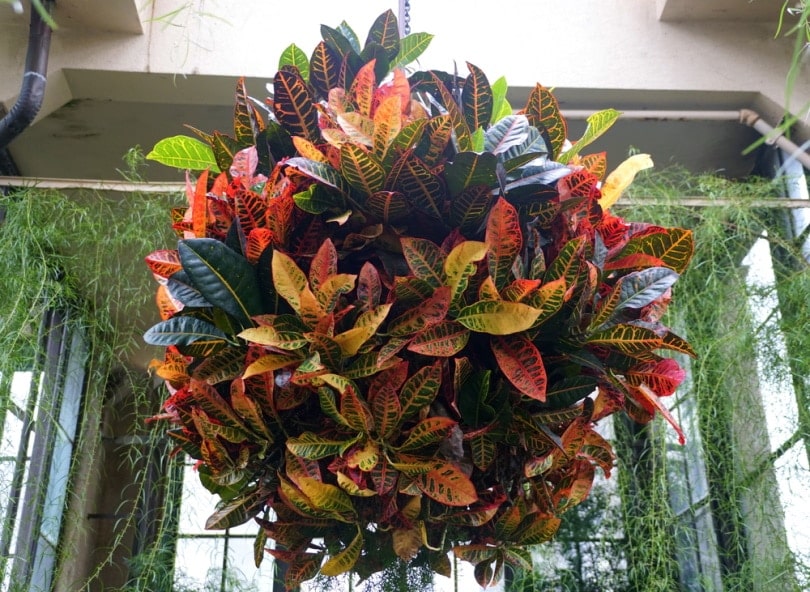
Final Thoughts
Croton plants are gorgeous but are unfortunately toxic to cats. If you have a feline roommate, you don’t want this plant in your home. Non-toxic alternatives include spider plants and Duffy ferns. Call your veterinarian immediately if you know or suspect your cat ate a poisonous plant.
Featured Image Credit By: Alohapatty, Shutterstock

